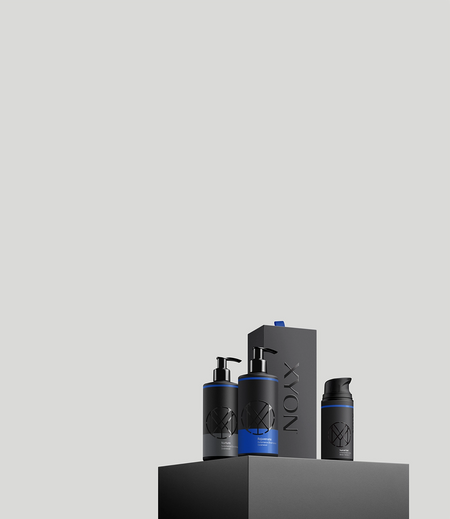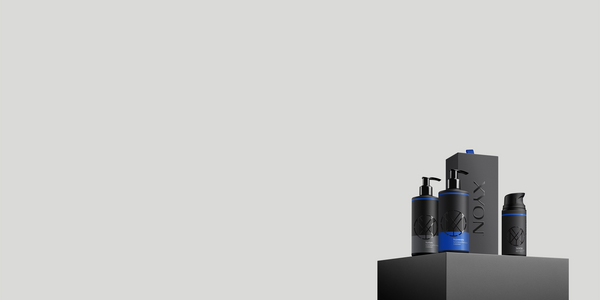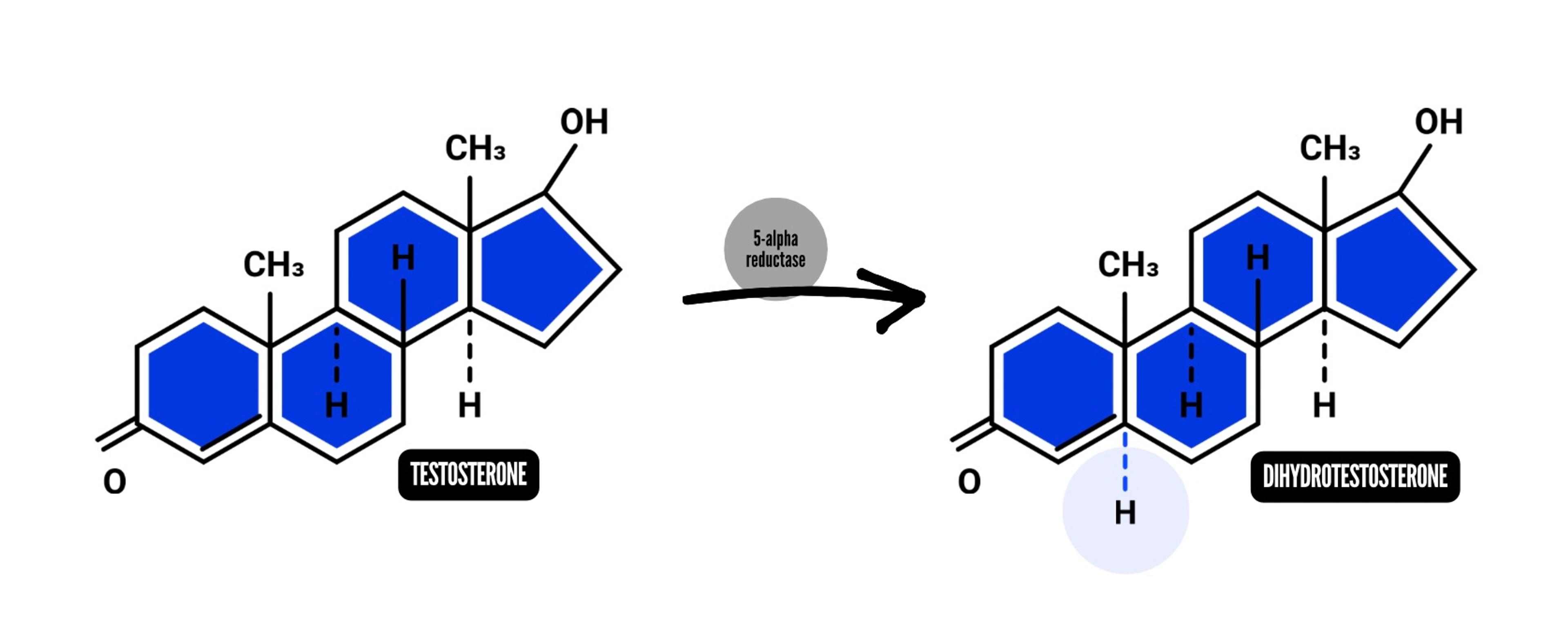It's impossible to talk about male pattern hair loss without also discussing the causal male sex hormone, dihydrotestosterone (DHT). In this article we'll cover what DHT is, unpack the relationship between DHT levels and hair loss and also discuss the role that genetics plays in determining rates of DHT production and metabolism.
What is DHT?
DHT, or dihydrotestosterone, is a type of hormone produced within the body. In males, DHT plays a role in the development of secondary sex characteristics in the womb and during puberty. After puberty, however, elevated DHT can lead to medical conditions including hair loss (androgenetic alopecia) and prostate enlargement (benign prostatic hyperplasia).
Whether it's a shampoo or a prescription, we're committed to helping you find the right solution.


At XYON, we believe in choices when it comes to hair loss treatment.
How is DHT made?
The hormone testosterone is the starting point of the chemical reaction that yields DHT.
But how is DHT made? An enzyme called 5-alpha reductase (5-AR) is needed to produce DHT. It facilitates the chemical reaction which yields DHT from testosterone.
Testosterone binds to the 5-AR enzyme at a particular location called the active site. The molecule is reduced, which means that it gains hydrogen (H) atoms, two to be exact. The new molecule is DHT.
The chemical formula for testosterone is C19H28O2
The chemical formula for dihydrotestosterone is C19H30O2

DHT and hair loss: How does DHT cause hair loss?
While DHT and testosterone are quite similar structurally, DHT’s additional hydrogen atoms make it a more potent androgen. This means that DHT is more likely to bind to androgen receptors. Among other sites throughout the body, androgen receptors can be found within hair follicles rooted in your scalp.
Normally, only about 10% of testosterone in circulation is converted into DHT (Nassar and Leslie 2021). This specific rate of conversion helps to ensure that despite its higher binding affinity, the amount of DHT remains proportionally lower to the amount of testosterone in circulation.
So how does DHT cause hair loss? The concentration of DHT within the scalp can increase for a variety of reasons (Asada et al. 2001). This increases the likelihood of DHT binding to androgen receptors within the scalp.
When DHT becomes attached to androgen receptors within hair follicles, it can stunt hair growth and signal premature termination of the hair growth cycle. The effects of DHT on your locks can range from mild thinning or slight loss of volume to more noticeable hair loss over time. Individuals with a genetic predisposition to this type of hair loss are more sensitive to fluctuations in DHT within the scalp.
What is the role of genetics in DHT and hair loss?
Your genetic profile can greatly affect local rates of DHT synthesis throughout the body. Mutations in the genes SRD5A1, SRD5A2 and SRD5A3 can affect the expression of 5-AR and consequently, the production of DHT throughout the body (Thomas et al. 2008).
Does having too little or too much DHT impact hair loss?
Mutations of the SRD5A2 gene are particularly relevant to hair loss, as they largely impact 5-AR expression within the scalp skin. A genetic condition known as congenital 5-AR II deficiency results from a heritable mutation in the SRD5A2 gene that limits or prevents expression of a specific type of 5-alpha reductase, 5-AR II.
Excess 5-AR II activity can result from overexpression of the SRD5A2 gene. While you can inherit this type of genetic mutation from one of your parents, gene expression can also be influenced by epigenetic or external factors such as diet, stress, sleep and exercise. Increased 5-AR II enzyme activity in particular has been linked to hair loss in men.
DHT in women
DHT plays a role in female health and development, although the exact influence this hormone has is still being explored. It is thought to participate in hair growth, libido, reproductive health, body composition, mood regulation and more.
Fluctuations in DHT can negatively impact health and wellbeing in females. Elevated DHT in females are tied to polycystic ovarian syndrome (PCOS) and hair loss, while lower DHT levels could lead to decreased libido or fertility issues.
DHT and hair loss treatment
We know that DHT can be bad news for your hair. Here's what you can do about DHT and hair loss.
Start a consultation through XYON to confirm that DHT is at the root of your hair loss. A specialist can help you select a treatment to prevent further hair loss and even grow your back some of your hair.
Medications like finasteride and dutasteride work by interfering with the production of DHT by the body. Over time, they reduce the amount of DHT at the scalp and combat the hormone's negative impact on hair health.
If you are concerned about side effects associated with these medications, precision topical finasteride or topical dutasteride formulations may be a better option for you.
DHT and hair loss: Takeaway
DHT is a hormone closely tied to pattern hair loss in men and in women. It is synthesized from testosterone by the 5-alpha reductase enzyme. A variety of factors including genetics and having too little or too much DHT can impact overall health, hair quality, sexual development and sexual function in both men and women.



